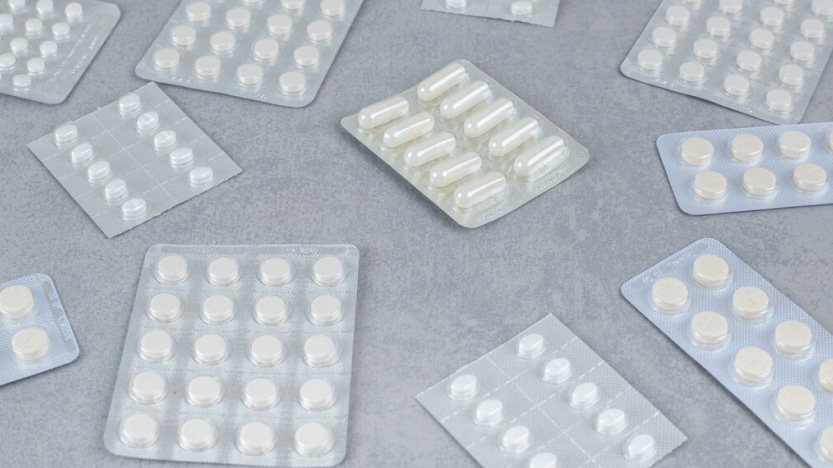Blister packaging is one of the most commonly used packaging methods across various industries, especially in logistics, pharmaceuticals, consumer goods, and electronics. Whether you’ve handled medicine bottles, packed toys, or received electronics in blister packs, this type of packaging plays an important role in ensuring your products are safe, secure, and easy to access. In this article, we’ll take you through everything you need to know about blister packaging—its types, benefits, process, and materials.
What is Blister Packaging?
Blister packaging consists of pre-formed plastic cavities that hold products in place. These cavities are usually made from clear plastic, and the product is held within them by a pliable lid or backing material. The term “blister” comes from the shape of the cavities, which are often deep and resemble blisters on your skin. This type of packaging is incredibly versatile, making it suitable for a range of industries from pharmaceuticals to consumer goods.
Blister packs can be produced in various shapes and sizes to fit the product being packaged. They’re usually sealed with heat, creating a strong bond that keeps the product protected inside until it’s ready for use. Many types of products, such as tablets, electronics, toys, and food, are commonly packed in blister packaging because of its cost-effectiveness, security features, and convenience.
Why Is Blister Packaging Important?
Blister packaging offers many advantages that make it an essential choice for businesses, especially in logistics and manufacturing. Here are some of the most significant benefits:
Individual Packaging for Easy Access
Blister packaging is known for its ability to store products individually. For instance, in the pharmaceutical industry, it’s often used to package pills and tablets, where each dose is clearly separated. This not only helps with organized storage but also ensures that the right quantity is available whenever needed.
Protects Product Integrity
Blister packaging is designed to preserve the quality of the product inside. The plastic and backing materials are selected based on the product’s sensitivity to moisture, light, and oxygen. Special coatings can be applied to make the pack moisture-resistant, and opaque materials like aluminum can block UV rays, protecting the contents from degradation.
Prevents Tampering
Blister packs come with built-in tamper-evident features. Once you open the pack, it cannot be resealed, which helps to prevent unauthorized access or tampering. This feature is particularly valuable in the pharmaceutical and electronics industries, where product safety and security are crucial.
Reduces Accidental Misuse
Blister packaging can be designed to make opening more difficult, especially when it comes to sensitive products like medications. With child-resistant (CR) packaging, the pack can’t be opened by young children without following specific instructions. This reduces the risk of accidental ingestion, especially for potentially harmful items.
Visibility of the Product
One of the biggest advantages of blister packs is that they allow consumers to see the product inside clearly. This is great for retail items, as customers can visually inspect the product before purchasing. Packaging with a clear plastic front also creates a more attractive display, especially if the pack has vibrant, colorful labels or designs.
Less Product Movement
Blister packaging holds products securely in place, minimizing any risk of damage or movement during transit. The pockets are molded specifically to fit the shape of the product, offering a snug and secure fit. This is particularly beneficial for products like electronics and delicate items that need extra protection during shipping.
Blister Packaging Process: How Does It Work?
The blister packaging process begins with designing the blister pack format, and the production stages depend on the specific requirements for the product being packaged. Let’s break down the process:
Step 1: Design and Die Creation
The first step is to design the blister packaging. The manufacturer will create a mold (negative die) that matches the shape of the product. This mold is typically made using a computer-controlled machine (CNC). Once the mold is created, it’s used to shape the plastic film into pockets or cavities that will hold the product securely.
Step 2: Film Forming
Once the design is ready, plastic film, usually made of PVC (polyvinyl chloride), is placed into a thermoforming or cold forming machine. In the thermoforming process, the film is heated until it becomes soft and pliable, then pressed into the mold using air pressure or a positive die. Cold forming, on the other hand, uses pressure without heating the material, and is typically used for materials like aluminum that require better barrier properties.
Step 3: Product Insertion
Once the cavities are formed, the product is inserted into each pocket. For smaller items like tablets or pills, this is often done automatically using a packaging machine with hopper feeding. The products are loaded into the hopper and fed into the pockets.
Step 4: Sealing
The next step involves sealing the blister pack. A backing material, often made from aluminum foil or paper, is placed over the formed plastic cavities. The lid is sealed using heat, which activates a resin that binds the plastic and foil together, creating a secure seal.
Step 5: Cooling and Cutting
After sealing, the blister packs are moved to a cooling station where the seal is solidified. Once cooled, the blister sheets are cut into individual blister packs using a die cutter. Additional cuts may be made for specific features, like child-resistant packaging.
Step 6: Quality Control and Packaging
The blister packs go through a quality control inspection process to ensure there are no defects. After this, the finished blister packs are either manually or automatically placed into boxes or larger containers for distribution.
Materials Used in Blister Packaging
Blister packaging relies on several materials, each carefully chosen based on the product’s requirements, such as moisture sensitivity or barrier protection. Here are some of the most commonly used materials in blister packaging:
PVC (Polyvinyl Chloride)
PVC is the most commonly used material in blister packaging due to its affordability and ease of shaping. It’s rigid, providing excellent protection for the product inside. PVC is often used for packaging tablets, pills, toys, and small consumer goods. However, there are environmental concerns with PVC, as it can release harmful chemicals when incinerated.
PVDC (Polyvinylidene Chloride)
PVDC is used as a coating to enhance the barrier properties of PVC. It offers excellent protection against moisture and oxygen, making it ideal for packaging products like medications that require long shelf life. However, it also raises environmental concerns due to its thermal degradation.
PET (Polyethylene Terephthalate)
PET is an alternative to PVC and is often used for consumer goods packaging. It is highly durable, transparent, and recyclable. However, it is more permeable to moisture, making it less suitable for pharmaceuticals unless combined with coatings.
Aluminum Foil
Aluminum foil is commonly used as a backing material for blister packs, especially in pharmaceutical packaging. It provides excellent barrier properties, blocking moisture, light, and oxygen, which helps extend the shelf life of sensitive products. Aluminum foil is also used in combination with plastic films to provide the best of both worlds: product visibility and protection.
Polypropylene (PP)
Polypropylene is becoming an alternative to PVC because it’s more environmentally friendly. It is lightweight, durable, and highly resistant to moisture. However, it’s more difficult to process compared to PVC, and its high-temperature processing requirements can make it more challenging for some blister packaging machines.
Types of Blister Packaging
Blister packaging comes in different varieties, each designed to meet specific needs. Below are the most common types:
Clamshell Packaging
Clamshell packaging consists of two connected plastic halves that open and close like a clam. It’s widely used for retail products such as electronics, toys, and food packaging. This design provides full visibility of the product and is easy for consumers to open.
Plastic and Paper Packaging
This is one of the most common types of blister packaging. The plastic is molded around the product, and then it’s heat-sealed onto a piece of cardboard. It’s cost-effective and often used for consumer goods.
Trapped Blister Packaging
This packaging is similar to plastic and paper blister packs, but it involves placing the product between two layers of cardboard. This type of packaging provides added security and is often used for retail products that need extra protection during shipping.
Aluminum Foil and Plastic Packaging
This type of packaging uses plastic for the product cavity and aluminum foil for the backing. It’s ideal for packaging pharmaceutical products like tablets and capsules, as the aluminum protects the product from moisture and light.
Aluminum Foil and Aluminum Foil Packaging
In this type, both the front and back of the blister pack are made of aluminum foil. It’s used for light-sensitive products because the opaque aluminum foil offers excellent protection against UV radiation. However, it’s more expensive and less commonly used.
Blister Packaging in Logistics
Blister packaging is widely used in logistics due to its ability to protect products during transport and storage. Its tamper-proof design ensures that products remain secure throughout the supply chain, reducing the risk of damage or theft. Automated blister packaging machines allow businesses to scale production quickly, saving time and resources. And since it minimizes the movement of products within the pack, blister packaging ensures that items arrive at their destination in perfect condition.
Get Quote and Save UPTO 70% on your next shipping
Conclusion
Blister packaging is a versatile and reliable packaging method that offers numerous benefits, including individual packaging, product protection, tamper evidence, and enhanced product visibility. Whether you’re in pharmaceuticals, retail, or logistics, understanding the different types of blister packaging and the materials used can help you make informed decisions about packaging solutions for your products.
As a business in the logistics sector, partnering with packaging experts can streamline your operations, improve customer satisfaction, and ensure that your products reach consumers safely and efficiently.
FAQs
What are the benefits of using blister packaging for retail products?
Blister packaging provides visibility, protection, and easy handling. It helps attract customers by showcasing the product and ensures that items are secure and protected from damage during transportation and storage.
How does blister packaging protect products?
Blister packaging uses molded plastic cavities to secure products, preventing movement and minimizing damage. It can also include barrier layers to protect against moisture, oxygen, and light, preserving the product’s integrity.
Can blister packaging be used for food products?
Yes, blister packaging is used for food items like snacks and frozen foods. Its ability to provide visibility and protection against contaminants makes it a suitable choice for packaging many food products.
Is blister packaging recyclable?
Blister packaging can be recyclable depending on the material used. PVC, for example, is challenging to recycle, while materials like PET and polypropylene offer more recycling options. Always check local recycling guidelines for specific types.
How can blister packaging help reduce counterfeit products?
Blister packaging has tamper-evident features, meaning it can’t be resealed once opened, making it harder for counterfeiters to replace original items with replicas. This helps protect brand integrity and customer trust.
Is blister packaging suitable for fragile items?
Yes, blister packaging is ideal for fragile items. The molded plastic cavities securely hold the product in place, minimizing movement and providing cushioning to protect sensitive items from impacts during transit.
What’s the difference between thermoforming and cold forming in blister packaging?
Thermoforming uses heat to shape plastic, making it ideal for products that don’t need moisture protection. Cold forming uses pressure without heat and is typically used for products needing better moisture and light barriers, like medications.

I’m Tammy Waller, a supply chain and logistics specialist with over 10 years of expertise. I’ve been an author and SFL employee for over 10 years.
As an author, I’ve been able to teach others. I love guiding users through supply chain and logistics operations.
I have substantial experience managing logistics operations, supply chain management, transportation, inventory management, and warehousing in shipping-moving and logistic services. I’ve worked on many worldwide logistics and supply chain projects, honing my abilities in negotiating rates, scheduling shipments, and managing vendors.



